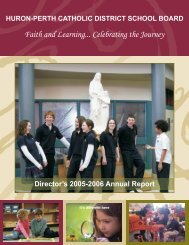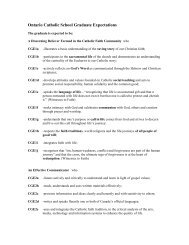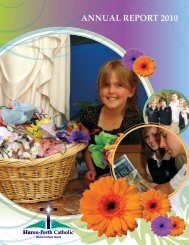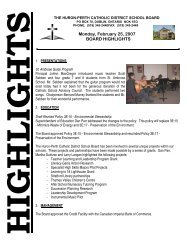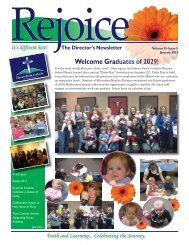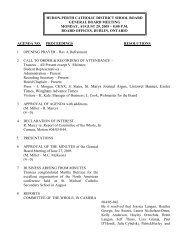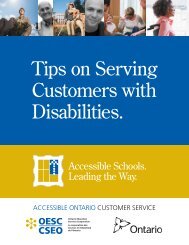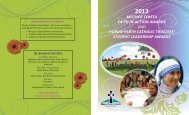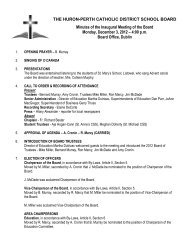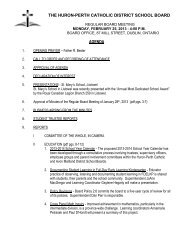The Individual Education Plan (IEP) - A Resource Guide, 2004
The Individual Education Plan (IEP) - A Resource Guide, 2004
The Individual Education Plan (IEP) - A Resource Guide, 2004
Create successful ePaper yourself
Turn your PDF publications into a flip-book with our unique Google optimized e-Paper software.
consider incorporating a number of strategies, such as group instruction,<br />
peer coaching, and buddy systems, that can help the student participate in<br />
many classroom activities. When other students are working on individual<br />
tasks that are not part of the student’s <strong>IEP</strong>, the classroom teacher needs to<br />
capitalize on that opportunity to provide the student with direct instruction<br />
and/or individualized tasks or assignments designed to help him or her master<br />
the knowledge and skills outlined in the <strong>IEP</strong>. Classroom teachers are<br />
encouraged to promote independence in students by structuring the location<br />
and procedures relating to the individualized tasks and assignments in such<br />
a way that students can practise skills and prepare performance tasks with a<br />
minimum of teacher assistance. <strong>Plan</strong>ning for direct instruction is essential<br />
and should focus on helping the student acquire the knowledge and skills<br />
recorded in the <strong>IEP</strong> before he or she attempts to move on to additional<br />
learning.<br />
Support personnel<br />
Many alternative programs – for example, in social skills, anger management,<br />
personal care, and orientation/mobility training – require the involvement of<br />
support personnel. Support personnel may include teacher’s assistants, who<br />
provide support to classroom teachers by assisting students with learning<br />
activities and providing appropriate accommodations as described in the<br />
<strong>IEP</strong>. <strong>Plan</strong>ning and providing individual timetables and location scheduling<br />
for teacher’s assistants and other support staff is a necessary part of the<br />
implementation process.<br />
Continuously Assess the Student’s Progress<br />
As with all students, assessment for students with an <strong>IEP</strong> should be ongoing<br />
and continuous. Assessment provides information that allows teachers to<br />
adjust daily instruction to maintain optimal learning conditions for the student.<br />
As noted above, it is essential to monitor the effectiveness of instructional<br />
strategies and accommodations. <strong>The</strong> use of multiple assessment<br />
strategies, including direct observation, portfolios, journals, rubrics, tests,<br />
projects, and self- and peer assessment, will provide the best understanding<br />
of the student’s learning. Students should be encouraged to become responsible<br />
partners in their own learning. To the extent possible, they should be<br />
aware of the annual program goals, learning expectations, and accommodations<br />
recorded in their <strong>IEP</strong> in order to assist the teacher in the assessment<br />
process. Students can help identify their own readiness for assessment tasks<br />
and can assist with the scheduling of assessments that do not fit easily into<br />
regular class time.<br />
Phase 4: Implement the <strong>IEP</strong><br />
45



